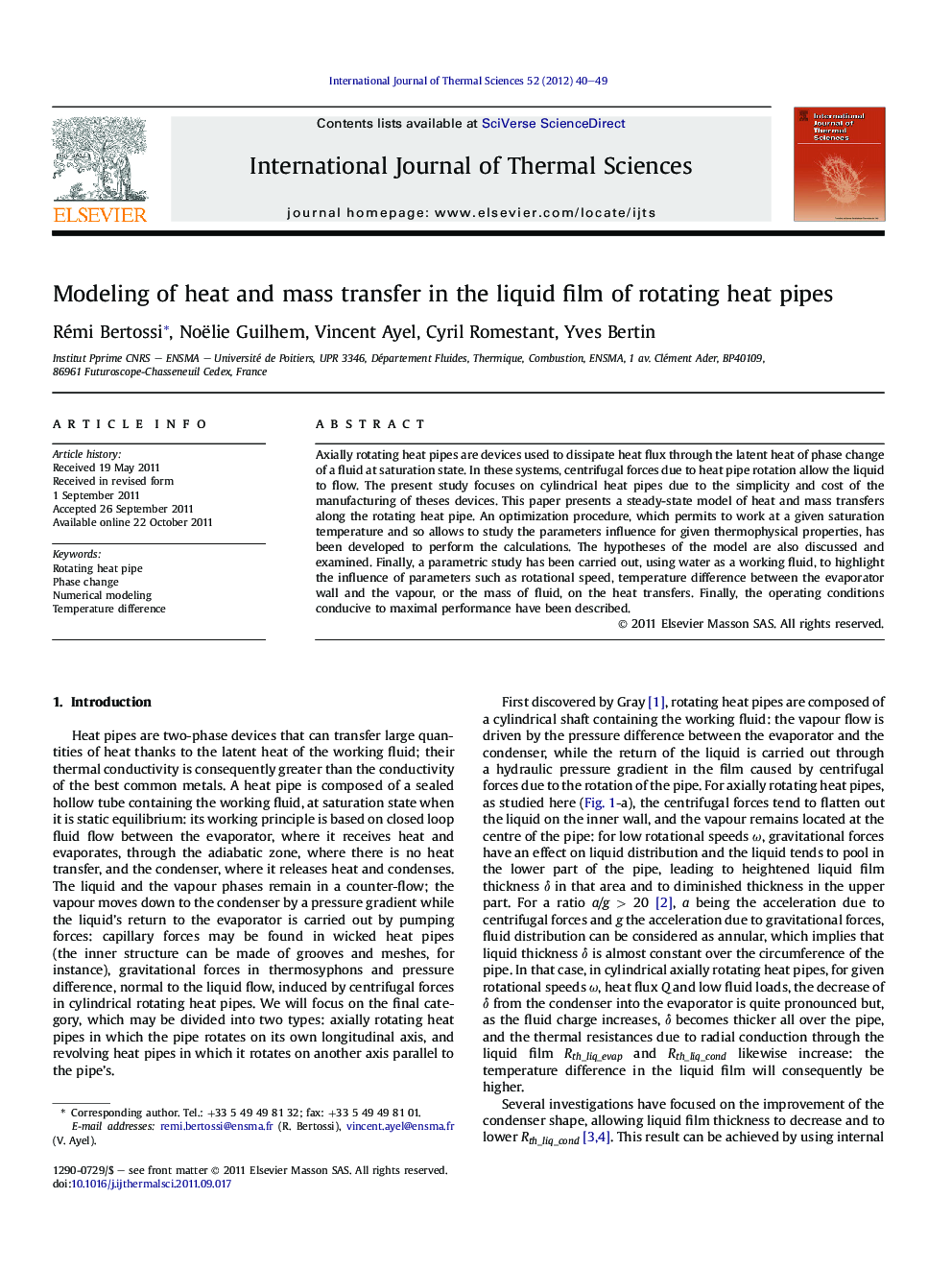| Article ID | Journal | Published Year | Pages | File Type |
|---|---|---|---|---|
| 669137 | International Journal of Thermal Sciences | 2012 | 10 Pages |
Axially rotating heat pipes are devices used to dissipate heat flux through the latent heat of phase change of a fluid at saturation state. In these systems, centrifugal forces due to heat pipe rotation allow the liquid to flow. The present study focuses on cylindrical heat pipes due to the simplicity and cost of the manufacturing of theses devices. This paper presents a steady-state model of heat and mass transfers along the rotating heat pipe. An optimization procedure, which permits to work at a given saturation temperature and so allows to study the parameters influence for given thermophysical properties, has been developed to perform the calculations. The hypotheses of the model are also discussed and examined. Finally, a parametric study has been carried out, using water as a working fluid, to highlight the influence of parameters such as rotational speed, temperature difference between the evaporator wall and the vapour, or the mass of fluid, on the heat transfers. Finally, the operating conditions conducive to maximal performance have been described.
► We model two heat and mass transfers in rotating heat pipes. ► We propose original hypotheses which are justified. ► We lead parametric study to have an exhaustive understanding of the behaviour of such heat pipes. ► Operating conditions leading to maximal performances are highlighted.
